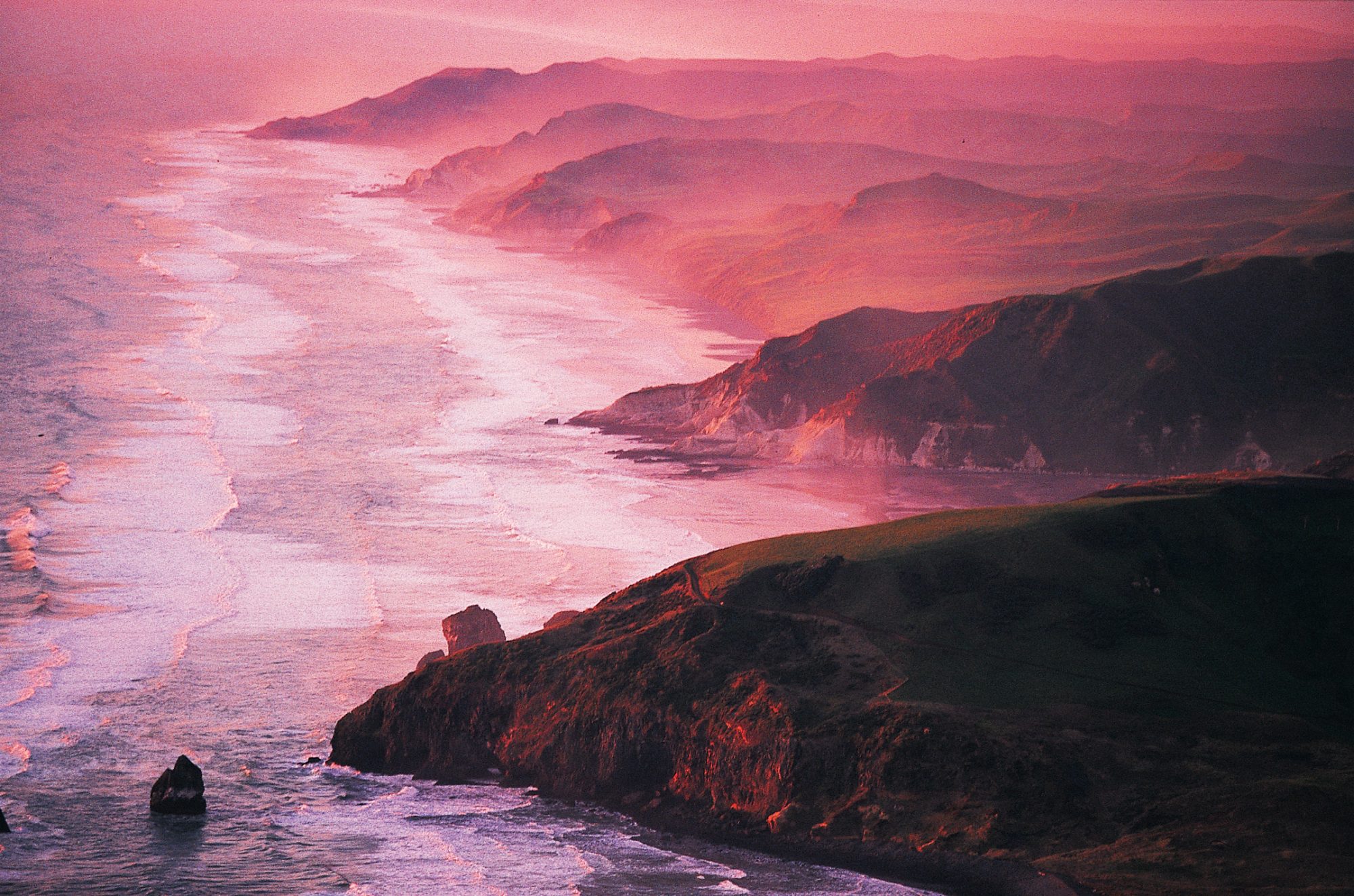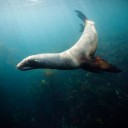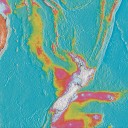
High over New Zealand
“What one can see from above, one can’t see from below.”
Thus does German photographer Klaus Francke express the basic truth of aerial photography. Viewed from the air, the world we walk with such familiarity becomes another place—one in which surprising forms are revealed and a remarkable degree of order is apparent. That which we do not perceive close up is, with vertical distance, made plain. Such illumination can be startling.
Francke trained as an architect, but has been a freelance photographer for more than 25 years. He took his first aerial photographs in 1974, over Iceland, but only in the past 10 years has he made this kind of photography his speciality. During this time he has photographed many countries from the air, in Europe, Africa and Australasia.
In late March and early April of 1997, Francke flew over much of New Zealand with his cameras. There being such a variety of landscape within close proximity, he found it a relatively easy country to photograph, and from his preparatory research with maps and books he knew which areas he wished to visit.
Nevertheless, having travelled little within New Zealand, he did not fully appreciate what he was going to see once he was aloft, nor what obstacles the elements might place in his way. It was up to his pilot, Alan Smallfield, knowledgeable of the local terrain and familiar with the vagaries of New Zealand weather from a quarter of a century of flying tourists, geological surveyors, skydivers and forestry photographers, to act as guide and adviser.
Francke describes the purpose of his aerial endeavours as “to extract pieces of art from the surface of the Earth.” Certainly, he cannot be accused of chasing the sort of promotional image that confers on a location an artificial allure. For this photographer, there is beauty beyond the breathtaking panorama. For all New Zealand’s magnificent scenery—its forests, mountains and glaciers—Francke is drawn by the subtleties lurking beneath its surface. He is particularly fond of water—lagoons, lakes, rivers and estuaries—and was especially impressed by the waterways of the South Island, but an unknown backwater is as likely to attract his lens as a famous lake.
The patterns and textures that reveal themselves only with altitude, and the manner, not apparent to the ground-dweller, in which light and shade caress the Earth, are what preoccupy him, regardless of location. Thus an ironsand works beside a muddy lake well off the tourist route proves as fertile a subject as the outflow of the mighty Tasman River into Lake Pukaki, with Mt Cook bestriding the horizon.
Through the eye and lens of Klaus Francke, New Zealand Geographic offers this salute to the land.























